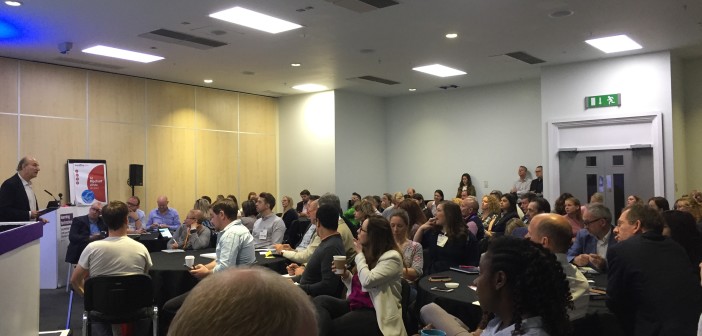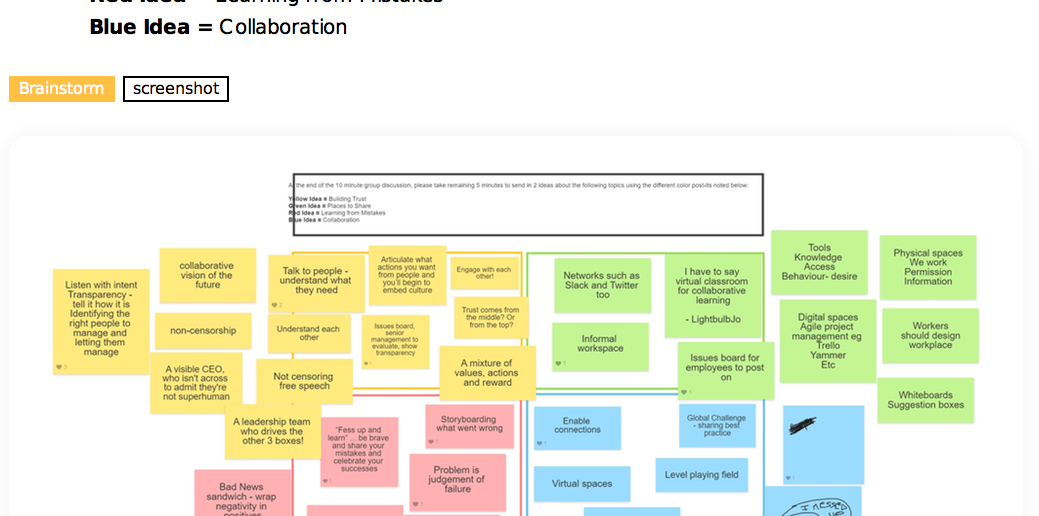When was the last time you attended a learning technologies conference that focused on the face to face learning experience? Not recently, I bet.
One of the sessions I attended at the Learning Technologies Summer Forum bucked the trend and focused on face to face learning.
First, Nick Shackleton-Jones, director of Learning & Performance Innovation at PA Consulting and his colleague Kenny Temowo, set out to provide an ‘unforgettable experience’. That was the title of the session and they started by appearing from behind a replica Tardis. Playing the roles of time lords they led the audience through a set of experiences. Those experiences included thinking about how you would like to be remembered, writing a thank you note to someone who deserved a thank you and playing an eat the penguin game, a game that involved the entire audience chasing each other around the room, and tattooing each other with Sharpie pens.
Why were they doing this? To get us to reconsider how to design face to face learning experiences so that they have business impact. “If you really do want to change people then design experiences. Or else share resources,” says Shackleton-Jones.
“We must be open to possibilities – that something could happen that could change someone’s thinking forever. L&D must be open to the possibilities,” he says.
The session was designed around five key themes:
- Agency
- Disarm
- Environment
- Uncertainty
- Story
Shackleton-Jones and Temowo say that these are the factors that L&D must pay attention to in order to design memorable, and potentially behaviour-changing, events.
At the end of the session, I had to ask what the difference was between ‘fun’ face to face learning events of yore and the experiences I had just had. Those traditional training sessions made L&D look out of touch with what the business needed. Wasn’t this refreshed approach in danger of replicating what L&D used to do?
No, says Shackleton-Jones. Traditionally, face to face training was used to deliver content, he says. And that was – and is – the problem. This experience design approach is not about delivering content. That can be done by sharing resources.
The types of experiences he describes are based on a business need. Temowo gave an example of a project he had run with a company that had a very formal, hierarchical culture. The experience involved people sitting and chatting in ball pits. These pits were situated in the foyer of the company’s office for everyone to see. The aim was to help break down silos in the business and to help start build more informal connections.
Sound gimmicky? It did look gimmicky but it worked. Even the CEO wound up in the ball pit talking with colleagues, something that would not previously have happened. The message here is: get the experience right and it will have the desired impact. The PA Consulting team spend a lot of time researching the business need and employee context as a part of the experience design process. They do this because they say that well designed experiences that help employees feel a situation in a new and different way can help change behaviours.
The second session I attended on learning culture featured Klaxoon, a technology for supporting live events. The session was delivered through the technology. That meant all attendees had to log on to the Klaxoon platform before the session started. This enabled the speaker, Nigel Paine, and session host, Jo Cook, to facilitate a lot of audience interaction, which provided answers to polls and helped create word clouds. Text chat enabled the host and speaker to pick up on comments from around the room. The technology was also used during a brainstorming task, allowing delegates to share ideas live on the screen in the room.
The activities generated 41 ideas (image below) on what the learning team could do help cultivate a learning culture as well as 67 thoughts on what delegates had learned from the session.
Although the ideas and insights can be very worthwhile, L&D needs to be mindful that technology does not overwhelm the content and delivery of the session. With technology such as Klaxoon, does the tech capability overly shape the content of the session or the session experience? And does the technology become a distraction? There is a very real possibility that it does and that people end up talking more about the tech than the subject of the session. That said, the platform does look very useful and the ability to capture live data and insights makes for a potentially more valuable experience.
As for the content of the session, Paine says there are six ingredients that an organisation requires in order to develop a learning culture. They are:
- Organisations need to learn from mistakes
- Organisations need a shared space where people can come together
- Collaboration
- Trust
- Shared values – common purpose
- Passion and commitment – belief in your organisation
The one thing that organisations should not do is push out more learning. “Increasing the volume of learning doth not a learning culture make,” says Paine.
This sentiment was echoed by conference chairman Donald Taylor. He urged delegates to ‘stop creating content” and start acting more strategically.
“We have the tools and mindset and now we need to think more strategically.”





